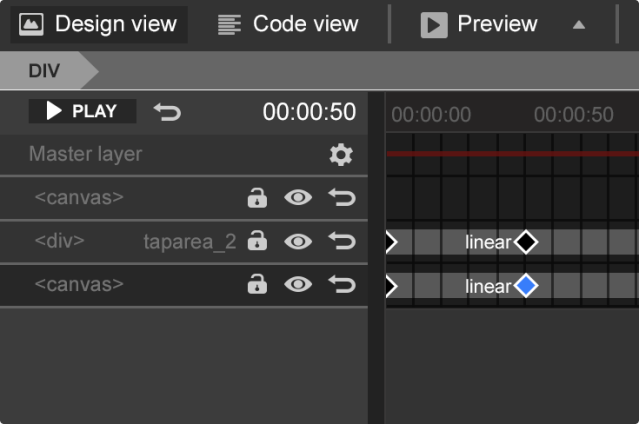With Apple’s latest iPhone still a glimmer on the grapevine, anyone shopping for a new phone right now has a lot to consider. Here’s a roundup of hottest handsets, in no particular order, keeping in mind that pricing and availability may change:
ANDROID
How to choose? Android fans have a shelf full of offerings to consider from every major Android maker. Google-owned Motorola just unveiled the Moto X, the first flagship phone under the Google umbrella. This week also brought the unveiling of LG’s G2, which will be coming to U.S. carriers sometime later this summer or early fall. And for Android purists, the Google Play store now offers stock Android versions of the Samsung Galaxy line’s popular S 4 and the HTC One.
 HTC ONE
HTC ONE
HTC’s thin and stylish HTC One reached consumers this spring on every major wireless carrier in the US except for Verizon, where the release date has been pushed back several times. With sleek unibody construction and premium feel, the HTC One offers an excellent screen display, some slick photo features and a unique BlinkFeed interface that pushes your content front and center. Rather than typical icons, you can get a stream of your photos, news and more.
This is a knockout phone. It has great-sounding speakers. And among other things, it can capture a few seconds of video and still images through a feature called “Zoe.” But it’s not without flaws. The Zoe software isn’t very intuitive, and the phone’s on-screen home button is in an odd place.
Pricing: $199.99 for a 32GB version ($299 for 64GB) at AT&T and Sprint with two-year service contracts. At T-Mobile: $99.99 down payment and $20 monthly payments over 24 months. In Indi, it is available around Rs.40,000 with all leading retailers. Most of the retailers provide attractive smartphone exchange schemes along with Interest free EMIs
Key specs: HTC UltraPixel Camera, 1080p HD video capture and playback, Beats Audio, quad core Qualcomm Snapdragon processor.
Editor Note – I own this and I am loving it.
 MOTO X.
MOTO X.
The first phone produced from scratch by Motorola Mobility since being acquired last year by Google is loaded with cutting-edge features. It promises to push hands-free operation to new levels, and its innovative Moto Maker platform means you can custom-design the look of it (for AT&T customers only to start). It will be available in the U.S. on all major carriers beginning later this month or early September.
Moto X seems to want a place in your car. Its Touchless Control feature lets you speak a command to the phone to make a call, find out what the weather is and a lot more. The phone can tell if you are in a moving vehicle and automatically turn on a Driving mode that will read text messages aloud to you, or tell you who’s calling. You can automatically respond with a text reply that lets callers know you’re behind the wheel. The cool part is that you don’t have to press physical buttons for any of this. You just speak “OK, Google Now” to tell the phone what you want it to deliver. But Touchless Controls have limits — in some instances you have to enter passcodes before you can proceed.
Another distinctive feature, Active Display, wakes up the phone when it is sleeping, sort of. If the phone is in your pocket or otherwise resting, it lets you pull it out to check the time. You’ll also see an icon for some notifications — say, if you have gotten an e-mail or a text message. There’s been some quibbling among techies about specs. The Moto X doesn’t have the world’s fanciest phone camera, but at 10 megapixels it is decent. And the screen is on the middling end of the spectrum.
Pricing: $199.99 or $249.99 with contract on major carriers. In India, it is yet to make to the shelfs. Moto Droid X is price around Rs.30,000 with some retailers.
Key specs: 2 GB of RAM. X8 Mobile Computing System, a series of chips that includes a Qualcomm Snapdragon S4 Pro. Android (Jelly Bean). 4.7-inch AMOLED high-definition display with a resolution of 720 x 1080.
Also worth noting: Motorola and Verizon Wireless also recently refreshed the Droid lineup with three new models headlined by the Droid Maxx. With varying specs, they share some Moto X features like Touchless Control.
LG G2.
The new flagship phone from LG offers a unique design with volume and power controls on the back. And how about this: Just pick up the phone to answer a call.
Yes, like the Moto X the G2 wants to let you take a step back from the habit of pressing a bunch of buttons for phone operation. On the G2, if you get a call you can answer just by picking up the phone rather than fumbling to hit a button. Among other features, you can knock on the screen twice to wake up the phone or shut it off. And LG has placed the power and volume control buttons on the back of the phone, which it believes is a more natural location.
LG is also touting the handset’s high-quality audio, and a Guest Mode sharing feature. The company hasn’t announced details on pricing or release date, but it says the G2 will be available all major U.S. carriers. In India, it is expected to be priced in the Rs.45,000 to Rs.50,000 price range.
Key specs: 5.2-inch full-high-definition IPS display. Android (Jelly Bean). Quad-core Qualcomm Snapdragon 800 processor. 32 GB of internal storage. LG is promising an all-day battery.
 SONY XPERIA Z.
SONY XPERIA Z.
This handsome phone has a lovely 5-inch display, 13-megapixel camera and a battery that gets a boost from so-called Stamina Mode, which shuts down wireless radios and background activities when you’re not using them. But the phone, a smaller version of Sony’s similarly named Android tablet, can also withstand a dunking, as it’s water-resistant down to 1 meter of water for up to a half-hour, provided all connectors and ports are sealed. It’s not the only phone that promotes resistance to spills and splashes. A Galaxy S 4 variant (see below), called the Galaxy S 4 Active promises a similar defense against water.
Key specs: 5-inch high resolution (1920 x 1080) screen, quad-core Qualcomm processor, water resistant, long-life battery.
It is available exclusively from T-Mobile, for $579.99 or for $25 a month for 24 months with nothing down.
India – Xperia Z Ultra – Around Rs.45,000. Xperia Z – Around Rs.37,000
 GALAXY S 4.
GALAXY S 4.
Samsung’s solid flagship phone is teeming with clever bells and whistles, along with parlor-trick gimmicks you will likely never take advantage of. On the plus side, a dual camera feature lets you take pictures with front and rear cameras simultaneously to, say, display an image of a beaming parent alongside a picture captured of a child scoring a goal in soccer. Answer calls or skip songs with a wave of your hand. Hover over the screen with your finger to magnify text or make other things happen. The battery is removable.
Key specs: 5-inch-high resolution (1920 x 1080 screen), quad-core Qualcomm processor, long-battery life, water-resistant (Galaxy S 4 Active model only).
Phone is available from all the major U.S. wireless carriers and several minor ones. Pricing varies, but $199.99 is the typical starting price with a two-year contract.
India – Around Rs.41,000. Samsung provides an exchange offer on old smartphones upto Rs.7,000 + Interest Free EMIs.
WINDOWS PHONE
NOKIA LUMIA 1020.
The Lumia 1020 sets the standard for smartphone cameras with a whopping 41-megapixel sensor with image stabilization. The state-of-the-art camera features high-end Zeiss optics, xenon flash, manual shutter, and other photographic controls. Nokia captures two images automatically each time you shoot. One of those is a full-resolution picture that turns out to be either 34 or 38 megapixels, depending on formats. You also get a very good-quality 5-megapixel image that can be more easily shared via e-mail or message or posted onto a social network. But some of the photo apps are a bit confusing.
No small feat: You can make out the display in direct sunlight.
Key specs: It’s mostly about the camera. But it also has a dual-core Qualcomm processor and 4.5-inch (1280 x 768) display.
It is available exclusively on AT&T at $299.99 with a two-year contract.
India – It is expected to be priced around Rs.39,000
BLACKBERRY
Q10. A phone for BlackBerry loyalists looking for the kind of physical Qwerty keyboard they were so enamored with on prior generation handsets, when Research In Motion was a smartphone leader. It’s also a touch-screen device preloaded with BlackBerry 10, the new, more modern mobile operating system. BlackBerry Balance can separate enterprise stuff from personal. Removable battery. But the screen is much smaller than on most rival smartphones, and BlackBerry lags behind competitors on apps.
Key specs: 3.1-inch display with 720 x 720 resolution.
It is available from AT&T and Verizon at $199.99 with a two-year contract. You can get it from T-Mobile with nothing down, if you pay $25 a month for 24 months. You may see other promotional deals that lower the price.
Editor’s Note – Considering that Blackberry might be on the market for sale anytime soon…not sure how many would like to put their money on BB.
APPLE
 iPhone
iPhone
Whatever the next act for the iPhone turns out to be, we already know the handset or handsets will have a fresh new mobile operating system called iOS 7. The latest software sports an edge-to-edge design, handy new Control Center, and improved notifications, among other changes. But there are lots of questions on where Apple will take the hardware. Might there be a smaller and cheaper iPhone? Or at the other extreme, a version with a larger display to bring the iPhone screen closer in size to many popular Android models? Maybe both. And how about an iPhone with a fingerprint scanner? We likely won’t know for sure until the fall, but it’s a fair bet you’ll continue to hear lots of rumors, and when Apple does get around to introducing its latest products, expect a few surprises.
Images Courtesy Amazon, PCMag and HTC.












